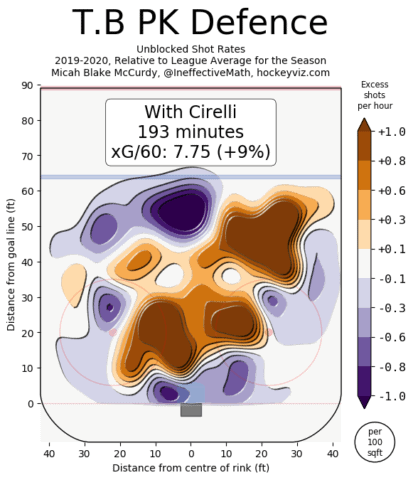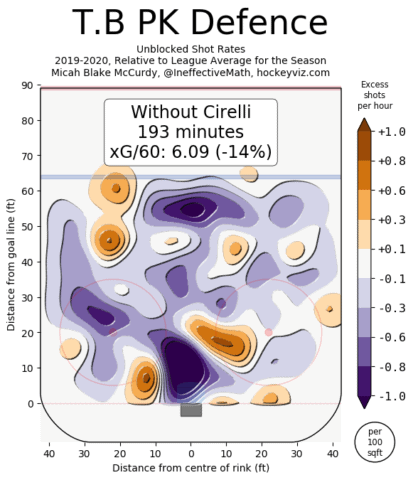Depth wins championships. Look no further than the 2019 St. Louis Blues, the 2018 Washington Capitals, the 2017 Pittsburgh Penguins…the most recent Stanley Cup champions all have strong players up and down their rosters.
The Tampa Bay Lightning have been at the top of the NHL standings for years but have been unable to win a championship. Yet, they’ve been good for this long because of their depth — from top to bottom, their lineup has high-level contributors. If Steven Stamkos, for example, has a poor game, there’s always another player who can step up and deliver results when it matters.
Related: Lightning Have Big RFA Issues to Face This Summer
In a salary-cap world, something will give eventually. Tough decisions will need to be made — like the Chicago Blackhawks of the early 2010s, who had to move star players to fit under the cap. Last season, the Vancouver Canucks swiped J.T. Miller from the Lightning because they were unable to fit his salary under the cap.
Tampa is again facing a salary-cap crunch, leaving the Canucks with an opportunity to nab Anthony Cirelli. The sophomore centre is a pending restricted free agent, leaving him wide open to an offer sheet attempt. For a team with depth issues like Vancouver, this is a major opportunity.
Why Cirelli?
Every team in the NHL wants a player like Cirelli. The 23-year-old centre would be a perfect fit on the second or third line and would significantly add to the Canucks’ depth. He (finally) started getting Selke Trophy buzz this season, for being one of the best defensive forwards, but he is generally an underrated player. Even on a star-laden roster in Tampa Bay, he ranked second on the team this season in overall value based on Evolving-Hockey’s goals above replacement model.
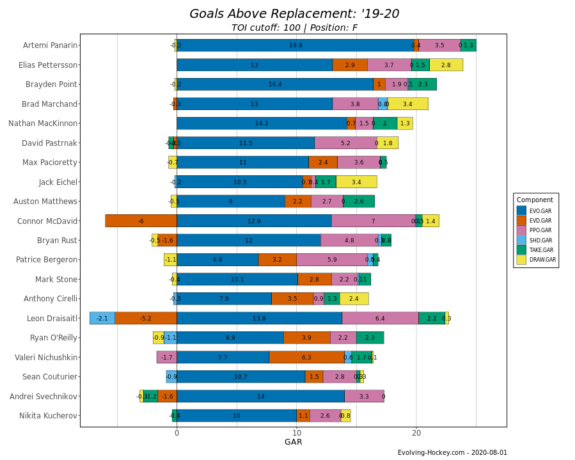
He ranks among the game’s elite, more valuable than 2019-20 scoring champion Leon Draisaitl and Cirelli’s superstar teammate Nikita Kucherov. For a player with only 44 points this season, how is that possible? First, 37 of his 44 points were scored at even strength. Cirelli is a very effective player at 5-on-5, especially when you consider who he spends most of his time on the ice against. Putting up 37 points while going head-to-head with top-six forwards consistently is impressive.
Quality of Competition isn’t something I typically put much stock into. Generally, it means a player who plays against tough competition is also playing with higher-quality teammates. Who they play with has far more impact than who they play against; the opponent changes every game, while teammates are generally consistent. Cirelli spent most of his minutes with either Stamkos and Alex Killorn or Tyler Johnson and Ondrej Palat. Those are pretty decent linemates, so it’s expected he would perform well with them despite the quality of competition.
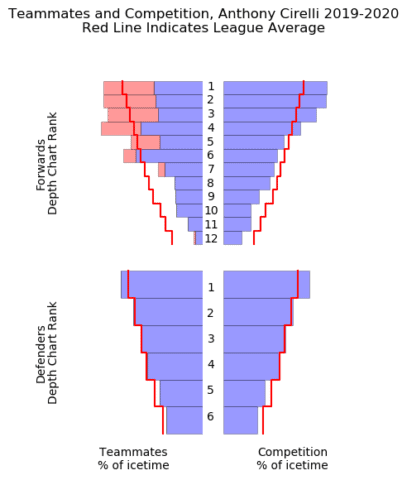
Micah Blake McCurdy explains this better than I do, but essentially this chart shows us that, on average, Cirelli is matched up against the opponent’s top-four forwards and top defender. The fact he was able to drive shots and goals so effectively in these matchups is impressive stuff.
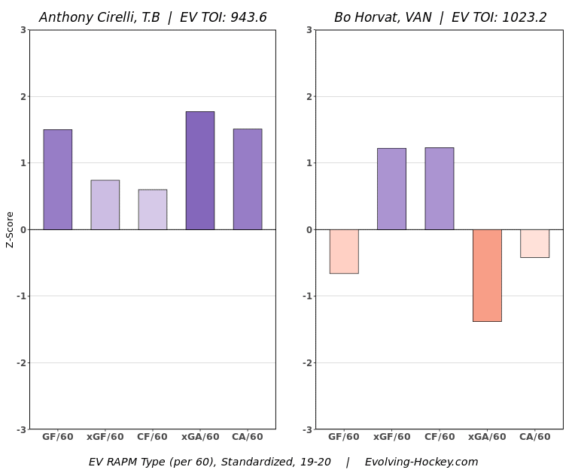
Cirelli was very effective in driving goals and shots while not sacrificing defence. Compare his results to Canucks captain Bo Horvat; the second-line centre did a good job driving offence, but he struggled to prevent shots and scoring chances against. Some could argue the Lightning are a better team with a better defence, but as we saw, Cirelli took on the difficult matchups and still performed admirably, despite having more talented linemates.
As I said at the top, Cirelli received significant attention for the Selke Trophy. Much of that has to do with his performance, but he also catches the eye with his effort. Check out this neutral zone stop and how he turns it into a breakaway:
In the same clip at the 0:31 mark, we can see his defensive intelligence in action. He reads the play perfectly and picks the pocket of the New York Rangers defender, immediately turning the play into a goal for. This kind of play has started becoming commonplace for Cirelli.
Related: The 8 Best Defensive Forwards in Hockey History
If there’s one slight against his play, it would be his penalty-killing numbers. He had a slightly negative impact on the Lightning’s penalty kill, surprising given his defensive prowess. According to McCurdy’s heatmaps, with Cirelli on the ice, Tampa bleeds shots against, particularly in the middle of the ice. When he’s on the bench, the Lightning locks it down and suffocates the opposition.
Cirelli would likely be used on the penalty kill in Vancouver, but he wouldn’t need to be the go-to guy as Jay Beagle has that job locked up. Still, it’s nice that he is a viable option should an extra skater be needed in that role.
Cirelli is an outstanding player; there’s little he isn’t good at and he would significantly help a Canucks team that could use depth.
What About the Salary Cap?
It’s a valid point. The Canucks are right against the salary cap and have some large, immovable contracts. That said, with expiring deals and some creativity, space can and should be made for a player of Cirelli’s calibre.
Cirelli is certainly due for a raise on his current contract of just over $700,000 per season. Evolving-Hockey has him in line to earn a new six-year contract worth just over $5.7 million per season. That’s not in Vancouver’s current price range given the cap situation, but by no means is it impossible.
Moves will need to be made. Large contracts for players like Brandon Sutter and Loui Eriksson will need to be dealt with one way or another. I’ll have a full offseason game plan that details how I would free up cap space and what the Canucks’ lineup should look like next season for The Hockey Writers once the season ends, but essentially, this is how I would start next season:
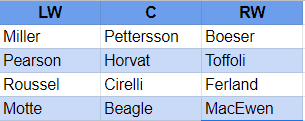
The lineup isn’t perfect and could change at any moment, but this roster has potential. There’s more depth on this team and bloated contracts are removed. This group would be harder to play against, too, with skill and physicality added to the lineup.
The Lightning cap situation also needs to be considered. They only have a shade over $1.2 million available right now with no major salary coming off the books. They also have a few quality restricted free agents who need new deals, including Cirelli, Mikhail Sergachev and Erik Cernak. Even Mitchell Stephens and Kevin Shattenkirk will be due for raises given their impressive seasons. In such a perilous position, offering Cirelli a deal worth, say, $5.5 million per season could be enough to draw him out of Tampa.
Next Season
Something that has already been evident in the Canucks’ qualifying-round series against the Minnesota Wild is the struggles of the bottom-six. Not to single out any one player, but the bottom-six forwards have been overwhelmed so far.
Related: A Look Back at the West Coast Express Line
Cirelli would significantly improve Vancouver’s forward depth and give the third line a new look. It would also free up Horvat to play in a more offensive role, and, effectively, the Canucks would have two modern-day checking lines.
In today’s NHL, extending offer sheets are rare (shout out to Montreal Canadiens general manager Marc Bergevin). The likelihood of general manager Jim Benning actually trying to sign Cirelli (or any other restricted free agent) isn’t high. That said, it’s a useful tool that, in this case, would have a huge impact on the team and their effort to win. If winning is the goal, extending an offer sheet to a restricted free agent who could help the roster is an avenue that must be explored, especially for a player of this calibre.
